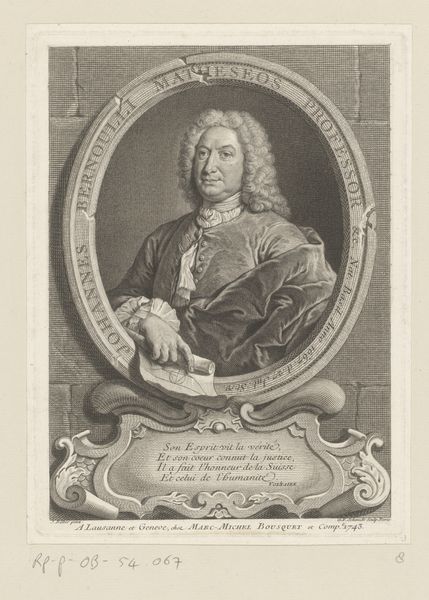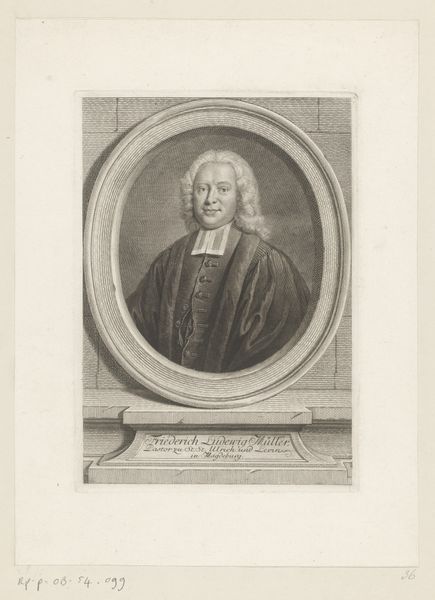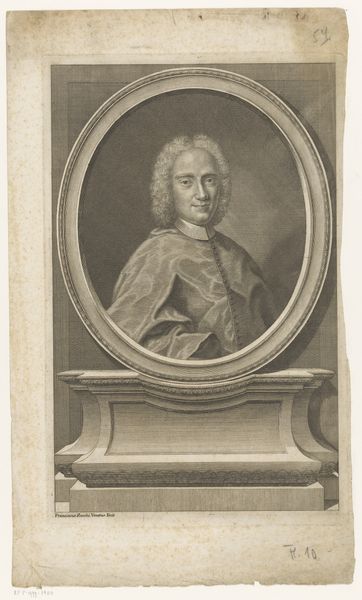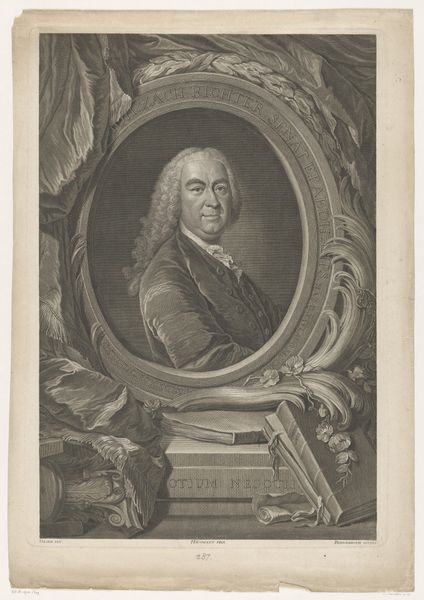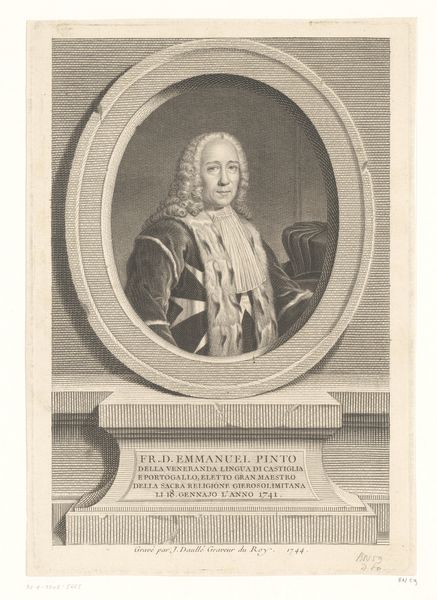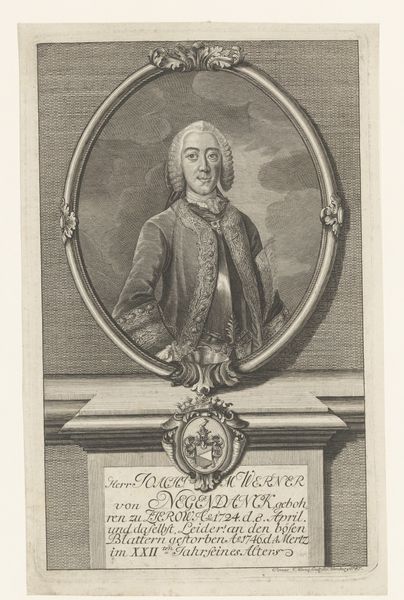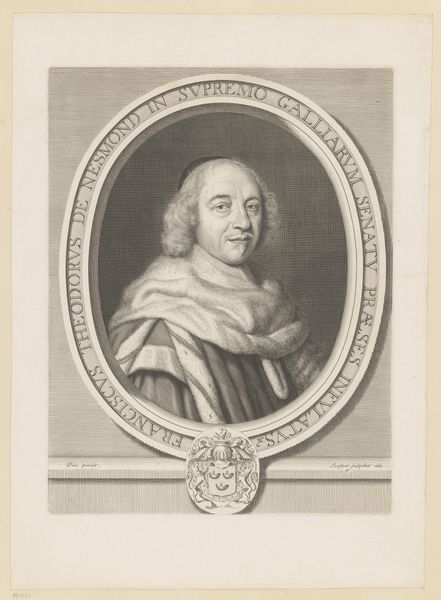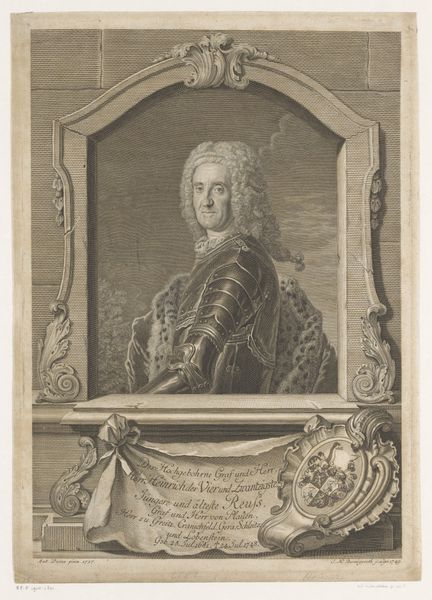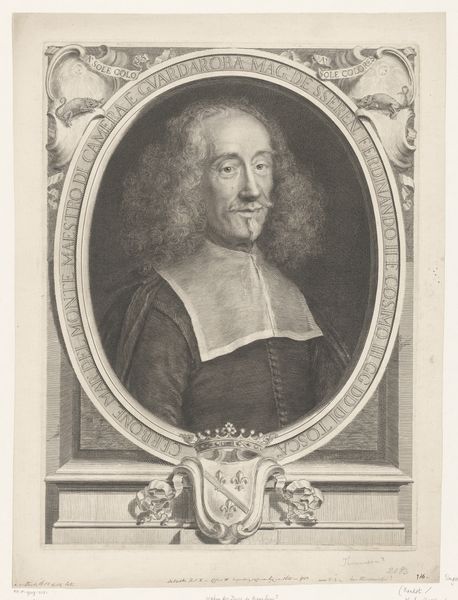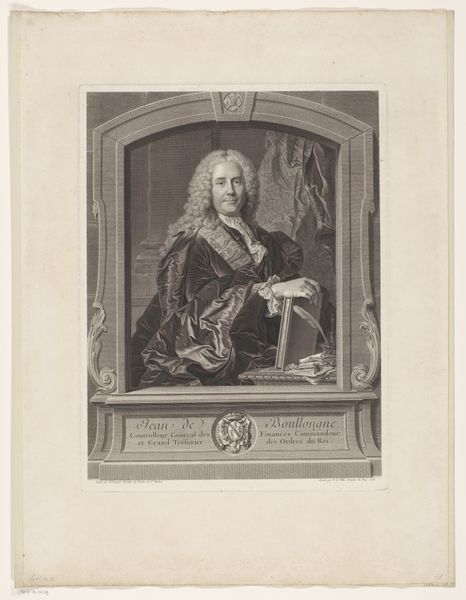
engraving
#
portrait
#
baroque
#
history-painting
#
engraving
Dimensions: height 239 mm, width 175 mm
Copyright: Rijks Museum: Open Domain
Curator: This engraving, crafted around 1750 by Johann Georg Wille, is titled "Portrait of Bernard Forest de Bélidor". Immediately, it projects an air of… assured confidence. Almost serene. Editor: A somewhat impenetrable serenity, I would say. Bélidor's encased in armour, framed within stone, overlaid with inscription...there are layers of sanctioned presentation happening here, and all that authority is quite intense. Curator: Yes, and each of those elements is meaningful! The armour certainly suggests military prowess and valor. Note how it contrasts with the wig and elegant dress; he's a man of both action and refinement, of both strategy and status. It merges two seemingly disparate identities, which gives rise to fascinating tensions in terms of representation and meaning. Editor: Precisely. The armor reads like a costumed performance of power, right? What did it mean to fashion oneself as a "warrior" at the French court? Were military accomplishments primarily a matter of personal agency or inextricably entangled within courtly displays? Curator: Courtly displays were undoubtedly integral to securing a position within a powerful monarchical structure, yet Bélidor was not solely performative. He was a brilliant military engineer and scientist, recognized for his practical work on hydraulics, ballistics, and civil engineering! Editor: I see. To connect this back to our reading of visual codes, I would argue that it becomes essential to tease out which parts of this portrait refer to actual events from Bélidor's lived experiences as opposed to images that further secure his standing and solidify the myth of enlightened leaders serving enlightened kings. Curator: A crucial point. And consider the symbolic implications of framing Bélidor within this classical, oval form – the effect evokes both ancient Roman portraiture and, to some extent, early Christian icons of powerful saints. Bélidor is thus, through the power of visual metaphor, equated with wisdom, power, and possibly even something approaching a national saint figure. Editor: Fascinating—the melding of classical, spiritual, and political iconography into a single potent image that clearly aimed to influence perception and bolster legacy. Considering France’s complex trajectory of power, rebellion, and class, there’s something poignant in these figures immortalized through symbols that oscillate between authority and control. Curator: Indeed, reflecting on it this way definitely expands my initial assessment! There’s always a reminder to explore the deeper threads interwoven into these images. Editor: Always, which also reminds me of the critical responsibility of dismantling images and their assumed authority, in the hopes of a much wider future understanding.
Comments
No comments
Be the first to comment and join the conversation on the ultimate creative platform.

